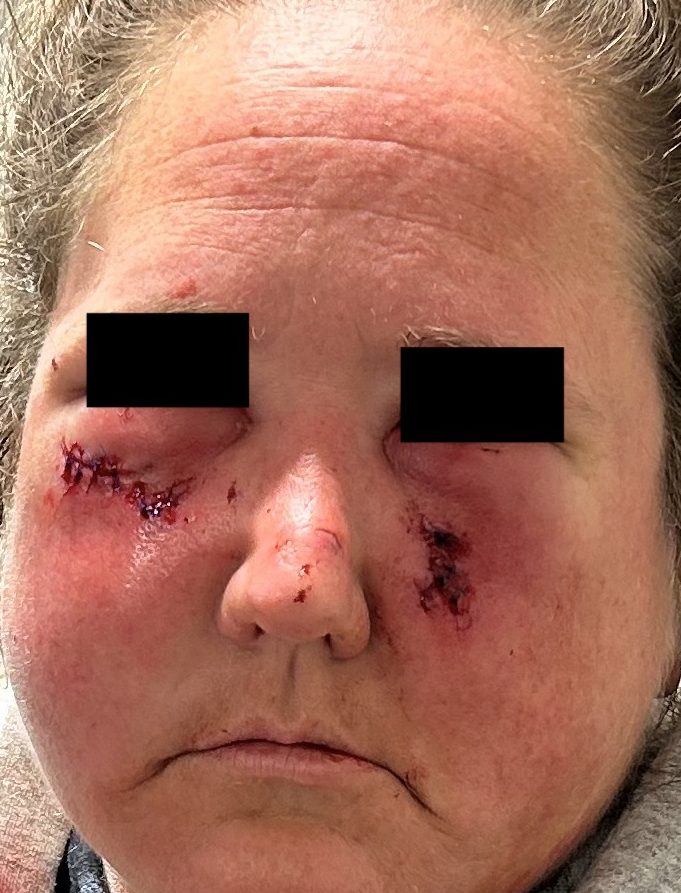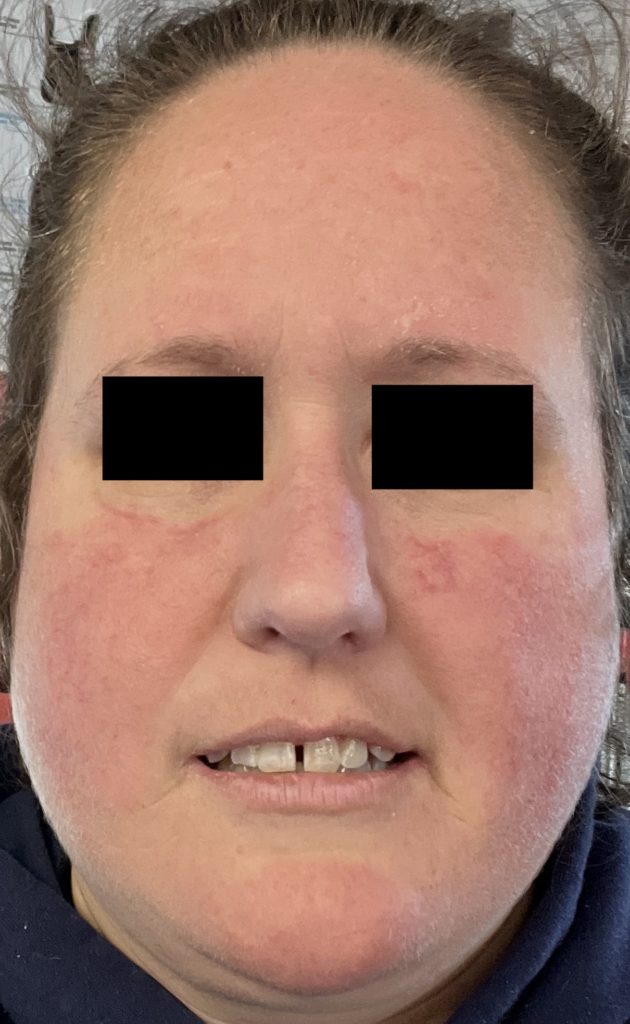Animal Bite to the Face
History:
A 30-year-old female with a history type 2 diabetes, and hypothyroidism presents to the emergency department after sustaining cat bites to her face one day prior. She had initially presented to a local community hospital where an APRN had only repaired the lacerations without any irrigation and prescribed 3 days of cephalexin. She presents to our tertiary center complaining of significant tenderness and swelling to her cheeks, in addition to subjective fevers. She denies any vision changes, headaches, or neuromotor deficits. Her cat is up to date on vaccines. She denies any other complaints or injuries. Patient is a non- smoker.
Findings:
There are complex lacerations to the inferior periorbital regions with intact prolene stiches. There is marked swelling and tenderness around the right wound with erythema and edema extending into the lower eyelid. Cranial nerves 2-12 intact. Extra-ocular motion intact with no vision changes. No foreign bodies seen on exam.
After removal of the stitches there was marked purulence from the right wound, with wound extension into the deep subcutaneous space.

Figure 1. Initial presentation with marked swelling around the right inferior peri-oribital wound and erythema.
Diagnosis:
Infected animal bite wound
Differential Diagnoses:
Normal post-repair swelling
Cellulitis
Allergic reaction
Workup Required:
CT facial with IV contrast to ensure no deep abscess collection, foreign bodies or involvement of critical structures including post-septal cellulitis.
Complete Blood Count
Basic Metabolic Panel
TDAP status
Plan:
Remove stitches to bilateral wounds, culture wounds, thorough irrigation and washout, loose approximation. IV ampicillin and sulbactam in the emergency department and 2 weeks of amoxicillin/clavulanate outpatient.
Expertise Needed:
Craniofacial and/or plastic surgeon
Treatment:
10cc of 1% lidocaine with 1:100,000 epinephrine was injected around both wounds for local field block. The prolene stitches were then removed from both wounds. There was significant purulence in the right wound, and at this point a culture swab was inserted into the wound. The wound was then gently probed with a Kelly clamp assessing for any loculations, deeper collections or foreign bodies (cat teeth). Thorough irrigation using approximately 2 L of dilute betadine was completed ensuring full extend of the wound was irrigated. Note this is the most critical component of any animal bite repair, and likely the reason this patient presented with a significant infection one day after her initial injury (she did not receive any irrigation at her prior repair). After adequate hemostasis, the superficial wound edges were loosely approximated with 4-0 prolene to allow for egress of any remaining infectious debris. Bacitracin ointment was then placed over the wounds and dressed with dry dressing. The patient was prescribed with two weeks of amoxicillin -clavulanate and given strict return precautions including worsening fever, swelling, headaches, vision changes etc. She was to follow up in one week for wound check.
Follow Up:
The patient followed up in one week and was found to have marked improvement in pain, swelling and erythema. Patient instructed to continue local wound care including sunscreen.

Figure 2. One week post repair and washout.

Figure 3. 2 months post repair with marked improvement in swelling and erythema.

